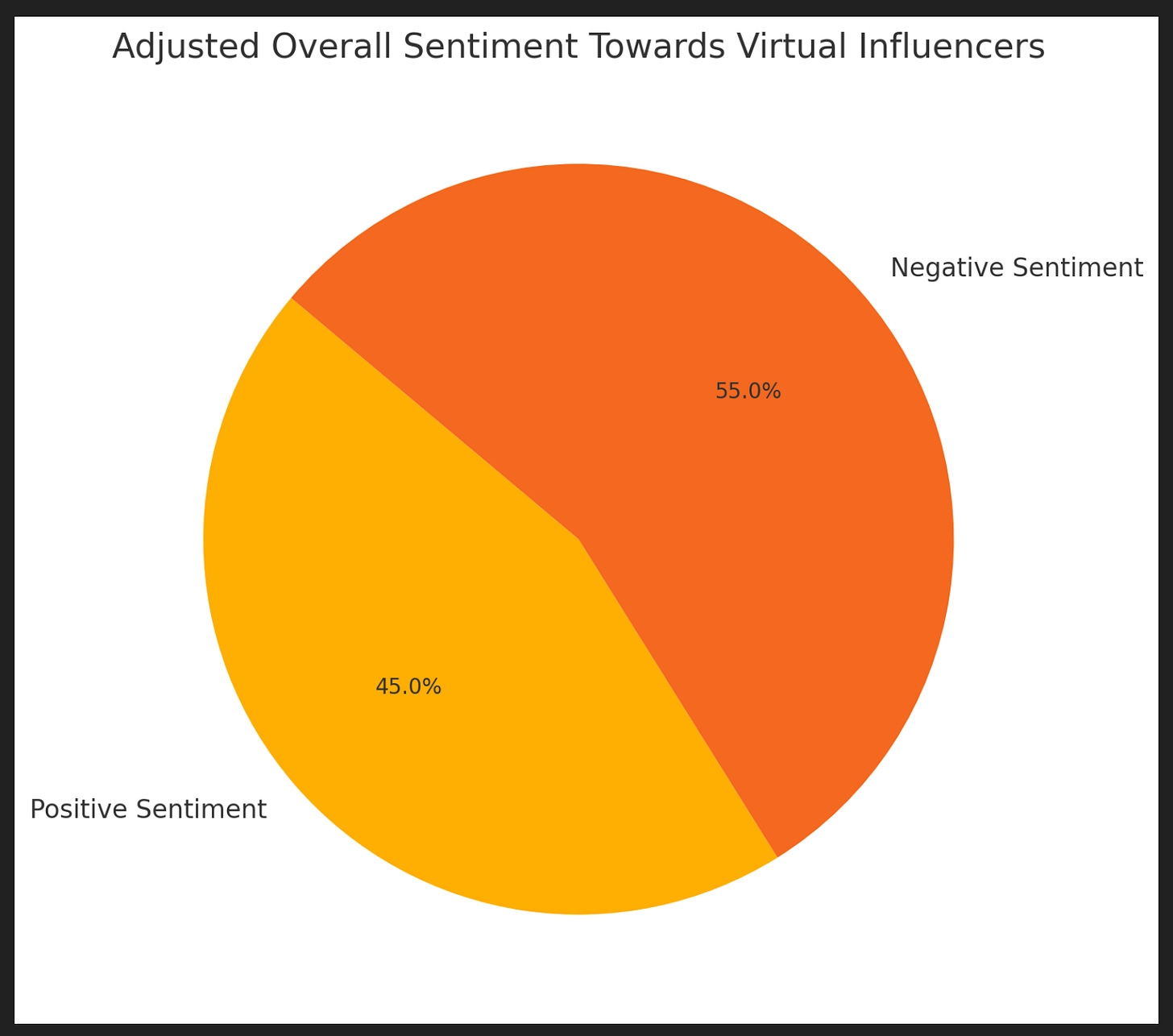Virtual Influencers vs. Human Influencers: Who Holds the Power in 2025?
Humans bring authenticity, virtual influencers bring innovation. The future might need both.
The short answer is virtual influencers are kind of taking over.
They are not there yet, but by 2025, we can expect a massive increase in their use. Big brands have already started experimenting with them, and it’s only a matter of time before smaller brands follow due to lower costs and other advantages.
Here is a deep analysis I have done to show the current state of AI influencers and how we can see them growing versus human influencers.
The Rise of Virtual Influencers:
Virtual influencers are AI-created personalities that look, act, and engage like humans. Using CGI and AI-powered storytelling, they have started dominating social media feeds, partnering with brands, and capturing global attention.
Check Lil Miquela, a virtual influencer with over 3 million Instagram followers, who has worked with brands like Prada and Calvin Klein.
Another example is Lu do Magalu, Brazil’s virtual icon, representing Magazine Luiza, one of the country’s largest retailers.
The Growing Appeal for Brands
Why are brands leaning towards virtual influencers? The reasons are clear:
Cost Control: Virtual influencers don’t demand high fees or unpredictable contracts.
Creative Flexibility: Brands have full control over messaging and image.
Global Reach: Virtual influencers can appear anywhere, anytime, without limitations.
For example, brands like Dior have worked with Noonoouri, a virtual influencer advocating fashion and sustainability, to reach new, younger audiences.
Audience Sentiments: Are People Accepting Virtual Influencers?
Despite their growing popularity, audience opinions are mixed. Comments on Reddit and Twitter showed all kinds of reactions:
Supporters:
“Virtual influencers are consistent, reliable, and never caught in scandals.”
“Brands save money and still get engagement.”
Skeptics:
“It feels fake. I can’t relate to something that isn’t real.”
“Influencers are supposed to be authentic. How do we trust this?”
These sentiments show that while brands see advantages, human influencers still hold power when it comes to trust and emotional connection.
Industry Impact: Marketing, Analytics, and SaaS
Virtual influencers are already reshaping industries:
Marketing: Brands are achieving higher ROI and global reach through controlled campaigns.
Analytics: Data-driven performance tracking allows brands to optimize campaigns in real time.
SaaS: Influencer platforms are integrating AI tools to manage campaigns involving both human and virtual influencers.
A report by Influencer Marketing Hub highlighted that virtual influencers drive up to 30% more engagement in specific campaigns compared to human influencers.
Ethical Debate: Authenticity vs. Scalability
One major criticism of virtual influencers is the loss of authenticity. Human influencers thrive on relatability, emotions, and lived experiences qualities AI personalities lack.
At the same time, brands argue that virtual influencers offer consistency, avoiding controversies that human influencers sometimes bring.
A Reddit user summed it up well:
“Virtual influencers are perfect for brands, but humans connect with humans. That’s never going to change.”
Who Holds the Power in 2025?
The data shows virtual influencers are rising fast, with brands embracing them for their scalability and cost-effectiveness. But human influencers still hold emotional power and trust that AI has not fully replicated.
So, who wins? The answer may not be clear cut. The future of influence in 2025 could be a coexistence of both, with humans driving authenticity and virtual influencers pushing innovation.



